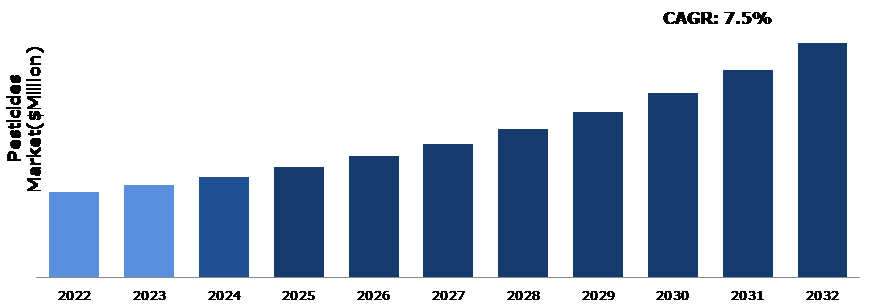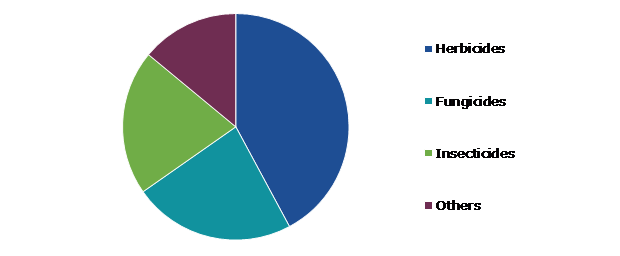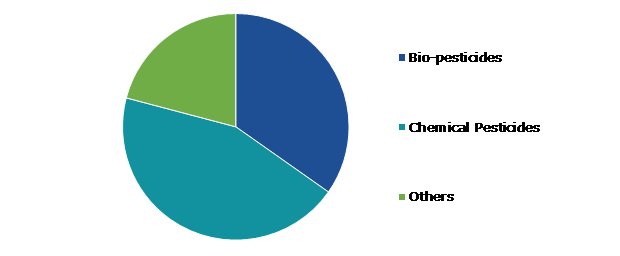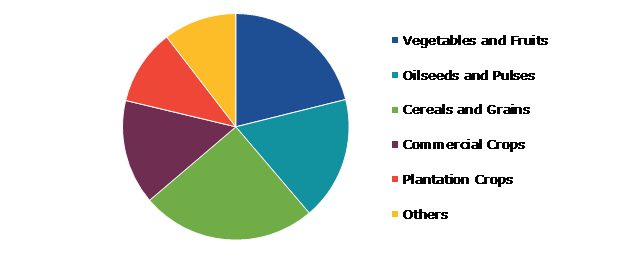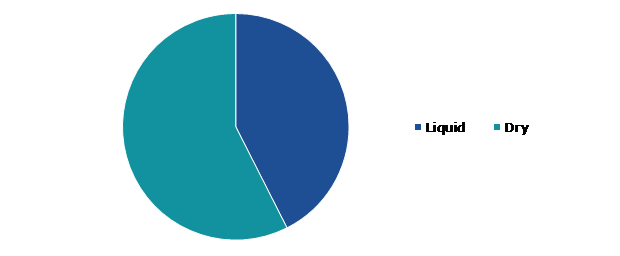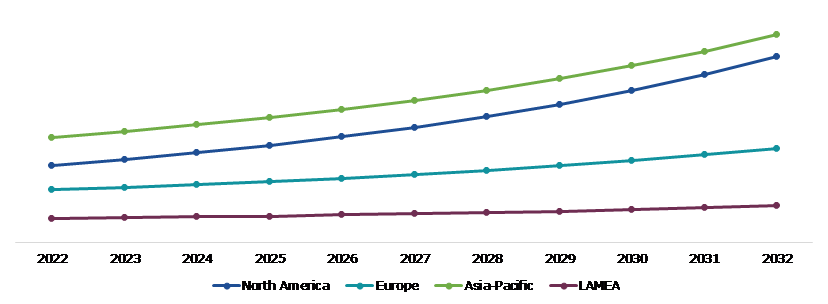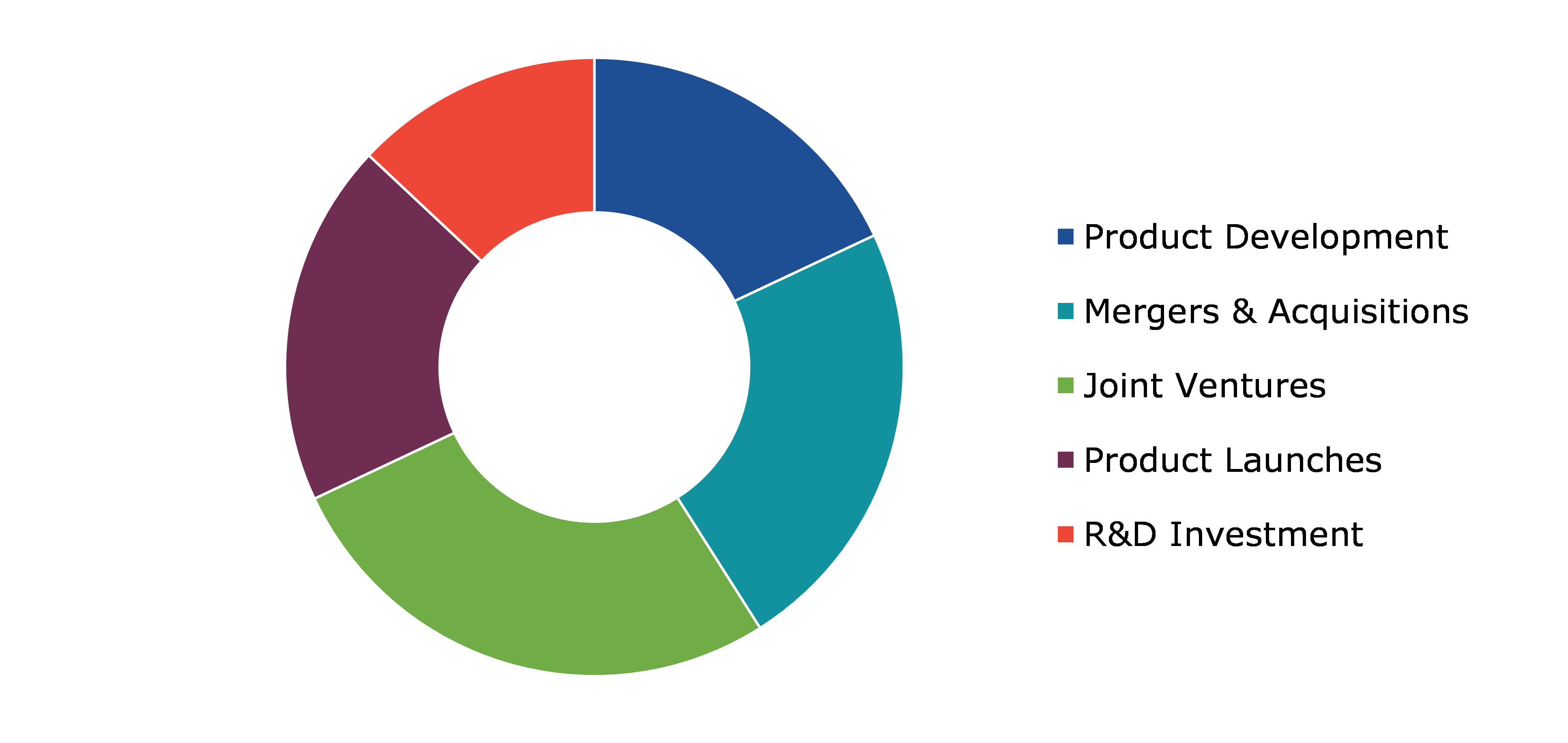Pesticides Market Report
RA09242
Pesticides Market by Target (Herbicides, Fungicides, Insecticides, and Others), Type (Bio-pesticides, Chemical Pesticides, and Others), Crop Type (Vegetables & Fruits, Oilseeds & Pulses, Cereals & Grains, Commercial Crops, Plantation Crops, and Others), Formulation (Liquid and Dry), and Region (North America, Europe, Asia-Pacific, and LAMEA): Global Opportunity Analysis and Industry Forecast, 2023-2032
Pesticides Overview
Pesticides are essential in modern agriculture, necessary for protecting crops against the relentless threats posed by pests and diseases. These chemical, biological, and mechanical agents form a diverse collection deployed to prevent, destroy, or repel pests, contributing significantly to strengthening global food production. However, the universal use of pesticides raises genuine concerns about their impact on the environment, potential risks to human health, and the emergence of pesticide-resistant pests. Pesticides are classified into several groups depending on their chemical makeup and mode of action. Biopesticides generated from natural sources such as animals, plants, microbes, and minerals are a more ecologically friendly alternative to synthetic equivalents.
Global Pesticides Market Analysis
The global pesticides market size was $45,681.5 million in 2022 and is predicted to grow with a CAGR of 7.5%, by generating a revenue of $92,628.0 million by 2032.
Source: Research Dive Analysis
COVID-19 Impact on the Global Pesticides Market
The interruption in the worldwide supply chain was one of the direct effects of the pandemic on the pesticide industry. Manufacturing factories were forced to close, transportation networks were disrupted, and international trade encountered unprecedented obstacles because of the virus's lockdowns and limitations. This resulted in a lack of raw materials and intermediary goods required for pesticide manufacture. Therefore, several pesticide producers failed to maintain consistent production levels, potentially leading to shortages in the market.
During the early stages of the pandemic, the demand for insecticides was interrupted. On the contrary, lockdowns and economic uncertainty disrupted agricultural activities, leading to fall in demand for pesticides. Farmers encountered labor shortages, logistical difficulties, and market uncertainty, forcing some to reduce their agricultural activities. The pandemic also highlighted the fundamental need of food security, pushing a greater emphasis on agriculture as a critical industry.
Improved Crop Quality to Drive the Pesticides Market Growth
Pesticides play an important role in managing diseases and pests that can destroy crops. Pesticides contribute to the overall health and vigor of plants by avoiding or moderating infestations, ensuring that crops achieve maturity without responding to pest’s harmful impacts. Pesticides play an important role in agricultural yield stabilization by reducing insect and bug losses. Stable yields are critical for satisfying food demand, preserving food security, and reducing market supply swings that can contribute to price volatility. Pesticides improve crop aesthetics by reducing damage from pests and diseases such as asthma and cancer. Consumers frequently compare flawless look with freshness and quality, and pesticides assist match these aesthetic expectations, making fruits appealing to buyers. In the global agriculture industry, meeting quality requirements is critical. Pesticides assist farmers in regularly producing crops that meet set quality standards, allowing access to local and worldwide pesticides market growth, and improving agricultural product quality. Pesticides help to increase the shelf life of harvested crops by preventing spoilage-causing organisms from growing. This not only lowers food waste, but also assures that consumers obtain items of the highest nutritional value and quality. The higher profitability for farmers demonstrates the economic benefits of pesticide use. Farmers may sell more high-quality products by preserving their crops from pests and diseases, earning higher market prices, and eventually boosting their economic sustainability.
Health Related Concerns to Restrain the Market Growth
One of the most significant barriers to pesticide usage is the possibility of acute and chronic health impacts. Pesticides can cause acute health concerns such as nausea, dizziness, respiratory difficulties, and skin irritation. Pesticide application workers are particularly prone to these consequences. Furthermore, long-term exposure to low amounts of pesticides has been related to more serious health concerns such as cancer, neurological diseases, reproductive troubles, and developmental defects in children. The hazardous nature of many pesticides, which are meant to target and remove organisms, including pests, can mistakenly impact non-target species, including people, raising these health issues. Furthermore, pesticide tolerance increases the health concerns associated with these chemicals. Pesticide tolerance occurs when pests develop the ability to withstand the effects of a pesticide, rendering it ineffective. Farmers may increase the number or frequency of pesticide applications, thus exposing both agricultural workers and consumers to higher quantities of these harmful substances. Furthermore, the need for more potent pesticides to combat resistant pests usually leads to the introduction of new chemical compounds with unknown health consequences.
Technological Advancements in the Formulation of Pesticides to Drive Excellent Opportunities
Nano-sized particles improve active ingredient distribution, increasing efficacy and lowering pesticide requirements. This technical advancement looks well for the development of pest-fighting compounds with more accuracy and intensity. Biotechnology and genetic engineering advancements have paved the way to produce genetically engineered crops with inherent insect resistance. This, along with the development of complementing insecticides, is a forward-thinking approach to integrated pest control. Biotechnology and pesticide formulation can work together to provide more sustainable pest control techniques. To analyze large datasets linked to pesticide formulations, artificial intelligence (AI) and machine learning algorithms are being used. This allows researchers to determine optimal component combinations, which leads to the production of more potent and targeted insecticides. AI-enabled continuous learning has the potential to revolutionize formulation optimization. The use of smart delivery devices into pesticide formulations improves active ingredient control and release. Microencapsulation and nanocarriers provide controlled release, extending pesticide effectiveness and lowering treatment frequency. Such improvements help to conserve resources and reduce the environmental effect of pesticide use.
Global Pesticides Market Share, by Target, 2022
Source: Research Dive Analysis
The herbicides sub-segment accounted for the highest market share in 2022. Herbicides are primarily used to manage and remove weeds that compete with crops for nutrients, water, and sunshine. Herbicides guarantee that crops have ideal circumstances for growth and development by inhibiting weed growth, resulting in enhanced yields. As they need less labor and time, herbicides are frequently more cost-effective than manual or mechanical weed control approaches. Large-scale farming operations can profit greatly from herbicide application efficiency, lowering total output costs. Herbicides are a rapid and efficient technique to manage weeds across wide areas, saving farmers’ considerable time. Farmers may focus on other important duties instead of spending too much time on labor-intensive weed management methods, resulting in increased output. Herbicides provide accurate and targeted weed management while reducing the impact on non-target crops. Farmers can use herbicides with more precision due to new technology such as GPS-guided sprayers, which reduce waste and environmental effect. Herbicides contribute to global food security by assisting farmers in protecting their crops against weed competition, therefore guaranteeing a stable and plentiful food supply. Increased agricultural yields, made possible by effective weed management, are critical to satisfying the world's expanding food demand.
Global Pesticides Market Share, by Type, 2022
Source: Research Dive Analysis
The chemical pesticides sub-segment accounted for the highest market share in 2022. The excellent efficacy of chemical pesticides in managing a wide range of pests is one of the key reasons for their extensive usage. These insecticides are designed to target and destroy insects, weeds, fungus, and other dangerous organisms that can affect crop development. Chemical insecticides frequently respond fast, providing support to pest-affected crops . This quick response is critical for avoiding serious damage and guaranteeing a good crop output. Chemical insecticides are often less expensive than alternative pest control approaches. Pesticides frequently need less initial investment than organic or biological control approaches, making them a more appealing alternative for farmers, particularly in economically challenged areas. Chemical pesticides are mass-produced, resulting in their broad availability in the pesticides market growth. This large manufacturing assures a steady supply, making these pesticides widely available to farmers in a variety of areas and operating sizes. Chemical pesticides are available in a variety of formulas and variations, allowing farmers to select solutions that are customized to specific insect issues. This customization guarantees that the pesticides are adaptive to a variety of crops, climates, and insect situations.
Global Pesticides Market Share, by Crop Type , 2022
Source: Research Dive Analysis
The cereals & grains pesticides sub-segment accounted for the highest market share in 2022. Pesticides play an important role in increasing agricultural yields by preventing or managing pest damage. Insects, weeds, and illnesses can destroy cereal and grain crop yield, lowering overall output. The rising worldwide population has boosted food consumption, particularly cereals and grains. Farmers attempt to maximize agricultural yield to fulfil this demand. Pesticides serve an important role in ensuring the amount and quality of the crop, which contributes to food security. Pesticides safeguard farmers' investments by reducing crop losses and providing a consistent revenue. Crop failures caused by insect infestations can have serious financial consequences for farmers, making pesticides a cost-effective crop protection strategy. The large rise in food output is one of the key benefits of utilizing pesticides in cereal and grain farming. Pesticides defend crops against pests and diseases, resulting in a better yield per unit of farmed land. This is critical for meeting the nutritional demands of the world's rising population.
Global Pesticides Market Share, by Formulation, 2022
Source: Research Dive Analysis
The dry sub-segment accounted for the highest market share in 2022. Dry formulations often require less packing than liquid formulations. This decrease in packing not only decreases manufacturing costs but also adds to a decrease in agricultural waste. Farmers and customers are increasingly looking for goods that support environmental practices, making dry insecticides an appealing alternative. Dry insecticides are lighter and less in volume than liquid formulations, making transportation and storage less expensive. The elimination of the need for specialized containers and the capacity to store bigger amounts in a smaller space all help to improve logistical efficiency. This is especially beneficial for farmers in isolated or rural locations with inadequate transportation infrastructure. In general, dry formulations have a longer shelf life than liquid insecticides. The lack of water in the formulation aids in the prevention of active component degradation over time. Farmers benefit from longer storage periods since it reduces the danger of product spoiling and ensures that insecticides are still effective when needed. Precision farming has demanded the development of more accurate and targeted pesticide application technologies. Dry pesticides make precision agricultural technology like unmanned drones and variable rate spraying systems easier to integrate. This accuracy not only improves pest control efficacy but also optimizes resource use.
Global Pesticides Market Size & Forecast, by Region, 2022-2032 ($Million)
Source: Research Dive Analysis
The Asia-Pacific pesticides market share generated the highest revenue in 2022. The agriculture industry in Asia-Pacific is rapidly increasing and intensifying. The production of crops is increasing as various countries in the region attempt to improve food security and fulfil the nutritional demands of their populations. Pesticides have a vital role in protecting crops from pests, illnesses, and weeds, resulting in increased yields. Asia-Pacific being a home to a sizable share of the world's population, the necessity for food safety is essential. Pesticides help crops resist pests and illnesses, guaranteeing a steady and secure food supply. Pesticides are required for sustainable agriculture due to the requirement to produce more food with limited arable land. Climate change has resulted in unpredictable weather patterns, allowing pests and illnesses to thrive. Pesticides have become vital instruments for farmers in protecting their crops from the negative impacts of climate change, ensuring agricultural output in the face of evolving environmental difficulties.
Competitive Scenario in the Global Pesticides Market
Investments in R&D and strategic partnerships are common strategies followed by major market players. For instance, in September 2021, Best Agrolife Limited, an agrochemical company based in India, acquired Best Crop Science Pvt Ltd, another Indian company with strong R&D activity in the development of active ingredients for fungicides and herbicides. This acquisition will assist Best Agrolife in increasing its manufacturing base, diversifying risk, and adding another technological production plant in the Gajraula, Amroha district of Uttar Pradesh.
Source: Research Dive Analysis
Some of the leading pesticides market analysis players are bioworks inc., Bayer Cropscience, Corteva Agriscience, Syngenta AG, BASF SE, Marrone Bio Innovations, Inc., FMC Corporation, Certis USA L.L.C., Adama Agricultural Solutions Ltd., and Dow Inc.
| Aspect | Particulars |
| Historical Market Estimations | 2020-2021 |
| Base Year for Market Estimation | 2022 |
| Forecast Timeline for Market Projection | 2023-2032 |
| Geographical Scope | North America, Europe, Asia-Pacific, and LAMEA |
| Segmentation by Target |
|
| Segmentation by Type |
|
| Segmentation by Crop Type |
|
| Segmentation by Formulation |
|
| Key Companies Profiled |
|
Q1. What is the size of the global pesticides market?
A. The global pesticides market size was $45,681.5 million in 2022 and is projected to reach $92,628.0 million by 2032.
Q2. Which are the major companies in the pesticides market?
A. BioWorks Inc., Bayer CropScience, Corteva Agriscience, Syngenta AG, and BASF SE are some of the key players in the global pesticides market.
Q3. Which region, among others, possesses greater investment opportunities in the future?
A. Asia-Pacific possesses great investment opportunities for investors in the future.
Q4. What will be the growth rate of the North America pesticides market?
A. The North America pesticides market share is anticipated to grow at 9.4% CAGR during the forecast period.
Q5. What are the strategies opted by the leading players in this market?
A. Investments in R&D and strategic partnerships are the two key strategies opted by the operating companies in this market.
Q6. Which companies are investing more on R&D practices?
A. BioWorks Inc., Bayer CropScience, Corteva Agriscience, Syngenta AG, and BASF SE, are the companies investing more on R&D activities for developing new products and technologies.
1. Research Methodology
1.1. Desk Research
1.2. Real time insights and validation
1.3. Forecast model
1.4. Assumptions and forecast parameters
1.5. Market size estimation
1.5.1. Top-down approach
1.5.2. Bottom-up approach
2. Report Scope
2.1. Market definition
2.2. Key objectives of the study
2.3. Report overview
2.4. Market segmentation
2.5. Overview of the impact of COVID-19 on global pesticides market
3. Executive Summary
4. Market Overview
4.1. Introduction
4.2. Growth impact forces
4.2.1. Drivers
4.2.2. Restraints
4.2.3. Opportunities
4.3. Market value chain analysis
4.3.1. List of raw material suppliers
4.3.2. List of manufacturers
4.3.3. List of distributors
4.4. Innovation & sustainability matrices
4.4.1. Technology matrix
4.4.2. Regulatory matrix
4.5. Porter’s five forces analysis
4.5.1. Bargaining power of suppliers
4.5.2. Bargaining power of consumers
4.5.3. Threat of substitutes
4.5.4. Threat of new entrants
4.5.5. Competitive Rivalry Intensity
4.6. PESTLE analysis
4.6.1. Political
4.6.2. Economical
4.6.3. Social
4.6.4. Technological
4.6.5. Legal
4.6.6. Environmental
4.7. Impact of COVID-19 on pesticides market
4.7.1. Pre-covid market scenario
4.7.2. Post-covid market scenario
5. Pesticides Market Analysis, By Target
5.1. Overview
5.2. Herbicides
5.2.1. Definition, key trends, growth factors, and opportunities
5.2.2. Market size analysis, by region, 2022-2032
5.2.3. Market share analysis, by country, 2022-2032
5.3. Fungicides
5.3.1. Definition, key trends, growth factors, and opportunities
5.3.2. Market size analysis, by region, 2022-2032
5.3.3. Market share analysis, by country, 2022-2032
5.4. Insecticides
5.4.1. Definition, key trends, growth factors, and opportunities
5.4.2. Market size analysis, by region, 2022-2032
5.4.3. Market share analysis, by country, 2022-2032
5.5. Research Dive Exclusive Insights
5.5.1. Market attractiveness
5.5.2. Competition heatmap
6. Pesticides Market Analysis, by Type
6.1. Overview
6.2. Bio-pesticides
6.2.1. Definition, key trends, growth factors, and opportunities
6.2.2. Market size analysis, by region, 2022-2032
6.2.3. Market share analysis, by country, 2022-2032
6.3. Chemical Pesticides
6.3.1. Definition, key trends, growth factors, and opportunities
6.3.2. Market size analysis, by region, 2022-2032
6.3.3. Market share analysis, by country, 2022-2032
6.4. Others
6.4.1. Definition, key trends, growth factors, and opportunities
6.4.2. Market size analysis, by region, 2022-2032
6.4.3. Market share analysis, by country, 2022-2032
6.5. Research Dive Exclusive Insights
6.5.1. Market attractiveness
6.5.2. Competition heatmap
7. Pesticides Market Analysis, by Crop Type
7.1. Overview
7.2. Vegetables & Fruits
7.2.1. Definition, key trends, growth factors, and opportunities
7.2.2. Market size analysis, by region, 2022-2032
7.2.3. Market share analysis, by country, 2022-2032
7.3. Oilseeds & Pulses
7.3.1. Definition, key trends, growth factors, and opportunities
7.3.2. Market size analysis, by region, 2022-2032
7.3.3. Market share analysis, by country, 2022-2032
7.4. Cereals & Grains
7.4.1. Definition, key trends, growth factors, and opportunities
7.4.2. Market size analysis, by region, 2022-2032
7.4.3. Market share analysis, by country, 2022-2032
7.5. Commercial Crops
7.5.1. Definition, key trends, growth factors, and opportunities
7.5.2. Market size analysis, by region, 2022-2032
7.5.3. Market share analysis, by country, 2022-2032
7.6. Plantation Crops
7.6.1. Definition, key trends, growth factors, and opportunities
7.6.2. Market size analysis, by region, 2022-2032
7.6.3. Market share analysis, by country, 2022-2032
7.7. Others
7.7.1. Definition, key trends, growth factors, and opportunities
7.7.2. Market size analysis, by region, 2022-2032
7.7.3. Market share analysis, by country, 2022-2032
7.8. Research Dive Exclusive Insights
7.8.1. Market attractiveness
7.8.2. Competition heatmap
8. Pesticides Market Analysis, by Formulation
8.1. Overview
8.2. Liquid
8.2.1. Definition, key trends, growth factors, and opportunities
8.2.2. Market size analysis, by region, 2022-2032
8.2.3. Market share analysis, by country, 2022-2032
8.3. Dry
8.3.1. Definition, key trends, growth factors, and opportunities
8.3.2. Market size analysis, by region, 2022-2032
8.3.3. Market share analysis, by country, 2022-2032
8.4. Research Dive Exclusive Insights
8.4.1. Market attractiveness
8.4.2. Competition heatmap
9. Pesticides Market, by Region
9.1. North America
9.1.1. U.S.
9.1.1.1. Market size analysis, by Target, 2022-2032
9.1.1.2. Market size analysis, by Type, 2022-2032
9.1.1.3. Market size analysis, by Crop Type, 2022-2032
9.1.1.4. Market size analysis, by Formulation, 2022-2032
9.1.2. Canada
9.1.2.1. Market size analysis, by Target, 2022-2032
9.1.2.2. Market size analysis, by Type, 2022-2032
9.1.2.3. Market size analysis, by Crop Type, 2022-2032
9.1.2.4. Market size analysis, by Formulation, 2022-2032
9.1.3. Mexico
9.1.3.1. Market size analysis, by Target, 2022-2032
9.1.3.2. Market size analysis, by Type, 2022-2032
9.1.3.3. Market size analysis, by Crop Type, 2022-2032
9.1.3.4. Market size analysis, by Formulation, 2022-2032
9.1.4. Research Dive Exclusive Insights
9.1.4.1. Market attractiveness
9.1.4.2. Competition heatmap
9.2. Europe
9.2.1. Germany
9.2.1.1. Market size analysis, by Target, 2022-2032
9.2.1.2. Market size analysis, by Type, 2022-2032
9.2.1.3. Market size analysis, by Crop Type, 2022-2032
9.2.1.4. Market size analysis, by Formulation, 2022-2032
9.2.2. UK
9.2.2.1. Market size analysis, by Target, 2022-2032
9.2.2.2. Market size analysis, by Type, 2022-2032
9.2.2.3. Market size analysis, by Crop Type, 2022-2032
9.2.2.4. Market size analysis, by Formulation, 2022-2032
9.2.3. France
9.2.3.1. Market size analysis, by Target, 2022-2032
9.2.3.2. Market size analysis, by Type, 2022-2032
9.2.3.3. Market size analysis, by Crop Type, 2022-2032
9.2.3.4. Market size analysis, by Formulation, 2022-2032
9.2.4. Spain
9.2.4.1. Market size analysis, by Target, 2022-2032
9.2.4.2. Market size analysis, by Type, 2022-2032
9.2.4.3. Market size analysis, by Crop Type, 2022-2032
9.2.4.4. Market size analysis, by Formulation, 2022-2032
9.2.5. Italy
9.2.5.1. Market size analysis, by Target, 2022-2032
9.2.5.2. Market size analysis, by Type, 2022-2032
9.2.5.3. Market size analysis, by Crop Type, 2022-2032
9.2.5.4. Market size analysis, by Formulation, 2022-2032
9.2.6. Rest of Europe
9.2.6.1. Market size analysis, by Target, 2022-2032
9.2.6.2. Market size analysis, by Type, 2022-2032
9.2.6.3. Market size analysis, by Crop Type, 2022-2032
9.2.6.4. Market size analysis, by Formulation, 2022-2032
9.2.7. Research Dive Exclusive Insights
9.2.7.1. Market attractiveness
9.2.7.2. Competition heatmap
9.3. Asia-Pacific
9.3.1. China
9.3.1.1. Market size analysis, by Target, 2022-2032
9.3.1.2. Market size analysis, by Type, 2022-2032
9.3.1.3. Market size analysis, by Crop Type, 2022-2032
9.3.1.4. Market size analysis, by Formulation, 2022-2032
9.3.2. Japan
9.3.2.1. Market size analysis, by Target, 2022-2032
9.3.2.2. Market size analysis, by Type, 2022-2032
9.3.2.3. Market size analysis, by Crop Type, 2022-2032
9.3.2.4. Market size analysis, by Formulation, 2022-2032
9.3.3. India
9.3.3.1. Market size analysis, by Target, 2022-2032
9.3.3.2. Market size analysis, by Type, 2022-2032
9.3.3.3. Market size analysis, by Crop Type, 2022-2032
9.3.3.4. Market size analysis, by Formulation, 2022-2032
9.3.4. Australia
9.3.4.1. Market size analysis, by Target, 2022-2032
9.3.4.2. Market size analysis, by Type, 2022-2032
9.3.4.3. Market size analysis, by Crop Type, 2022-2032
9.3.4.4. Market size analysis, by Formulation, 2022-2032
9.3.5. Indonesia
9.3.5.1. Market size analysis, by Target, 2022-2032
9.3.5.2. Market size analysis, by Type, 2022-2032
9.3.5.3. Market size analysis, by Crop Type, 2022-2032
9.3.5.4. Market size analysis, by Formulation, 2022-2032
9.3.6. Rest of Asia-Pacific
9.3.6.1. Market size analysis, by Target, 2022-2032
9.3.6.2. Market size analysis, by Type, 2022-2032
9.3.6.3. Market size analysis, by Crop Type, 2022-2032
9.3.6.4. Market size analysis, by Formulation, 2022-2032
9.3.7. Research Dive Exclusive Insights
9.3.7.1. Market attractiveness
9.3.7.2. Competition heatmap
9.4. LAMEA
9.4.1. Brazil
9.4.1.1. Market size analysis, by Target, 2022-2032
9.4.1.2. Market size analysis, by Type, 2022-2032
9.4.1.3. Market size analysis, by Crop Type, 2022-2032
9.4.1.4. Market size analysis, by Formulation, 2022-2032
9.4.2. UAE
9.4.2.1. Market size analysis, by Target, 2022-2032
9.4.2.2. Market size analysis, by Type, 2022-2032
9.4.2.3. Market size analysis, by Crop Type, 2022-2032
9.4.2.4. Market size analysis, by Formulation, 2022-2032
9.4.3. South Africa
9.4.3.1. Market size analysis, by Target, 2022-2032
9.4.3.2. Market size analysis, by Type, 2022-2032
9.4.3.3. Market size analysis, by Crop Type, 2022-2032
9.4.3.4. Market size analysis, by Formulation, 2022-2032
9.4.4. Argentina
9.4.4.1. Market size analysis, by Target, 2022-2032
9.4.4.2. Market size analysis, by Type, 2022-2032
9.4.4.3. Market size analysis, by Crop Type, 2022-2032
9.4.4.4. Market size analysis, by Formulation, 2022-2032
9.4.5. Rest of LAMEA
9.4.5.1. Market size analysis, by Target, 2022-2032
9.4.5.2. Market size analysis, by Type, 2022-2032
9.4.5.3. Market size analysis, by Crop Type, 2022-2032
9.4.5.4. Market size analysis, by Formulation, 2022-2032
9.4.6. Research Dive Exclusive Insights
9.4.6.1. Market attractiveness
9.4.6.2. Competition heatmap
10. Competitive Landscape
10.1. Top winning strategies, 2022
10.1.1. By strategy
10.1.2. By year
10.2. Strategic overview
10.3. Market share analysis, 2022
11. Company Profiles
11.1. BioWorks Inc.
11.1.1. Overview
11.1.2. Business segments
11.1.3. Type portfolio
11.1.4. Financial performance
11.1.5. Recent developments
11.1.6. SWOT analysis
11.2. Bayer CropScience
11.2.1. Overview
11.2.2. Business segments
11.2.3. Type portfolio
11.2.4. Financial performance
11.2.5. Recent developments
11.2.6. SWOT analysis
11.3. Corteva Agriscience
11.3.1. Overview
11.3.2. Business segments
11.3.3. Type portfolio
11.3.4. Financial performance
11.3.5. Recent developments
11.3.6. SWOT analysis
11.4. Syngenta AG
11.4.1. Overview
11.4.2. Business segments
11.4.3. Type portfolio
11.4.4. Financial performance
11.4.5. Recent developments
11.4.6. SWOT analysis
11.5. BASF SE
11.5.1. Overview
11.5.2. Business segments
11.5.3. Type portfolio
11.5.4. Financial performance
11.5.5. Recent developments
11.5.6. SWOT analysis
11.6. Marrone Bio Innovations, Inc
11.6.1. Overview
11.6.2. Business segments
11.6.3. Type portfolio
11.6.4. Financial performance
11.6.5. Recent developments
11.6.6. SWOT analysis
11.7. FMC Corporation
11.7.1. Overview
11.7.2. Business segments
11.7.3. Type portfolio
11.7.4. Financial performance
11.7.5. Recent developments
11.7.6. SWOT analysis
11.8. Certis USA L.L.C.
11.8.1. Overview
11.8.2. Business segments
11.8.3. Type portfolio
11.8.4. Financial performance
11.8.5. Recent developments
11.8.6. SWOT analysis
11.9. Adama Agricultural Solutions Ltd.
11.9.1. Overview
11.9.2. Business segments
11.9.3. Type portfolio
11.9.4. Financial performance
11.9.5. Recent developments
11.9.6. SWOT analysis
11.10. Dow Inc.
11.10.1. Overview
11.10.2. Business segments
11.10.3. Type portfolio
11.10.4. Financial performance
11.10.5. Recent developments
11.10.6. SWOT analysis
Personalize this research
- Triangulate with your own data
- Request your format and definition
- Get a deeper dive on a specific application, geography, customer or competitor
- + 1-888-961-4454 Toll - Free
- support@researchdive.com

